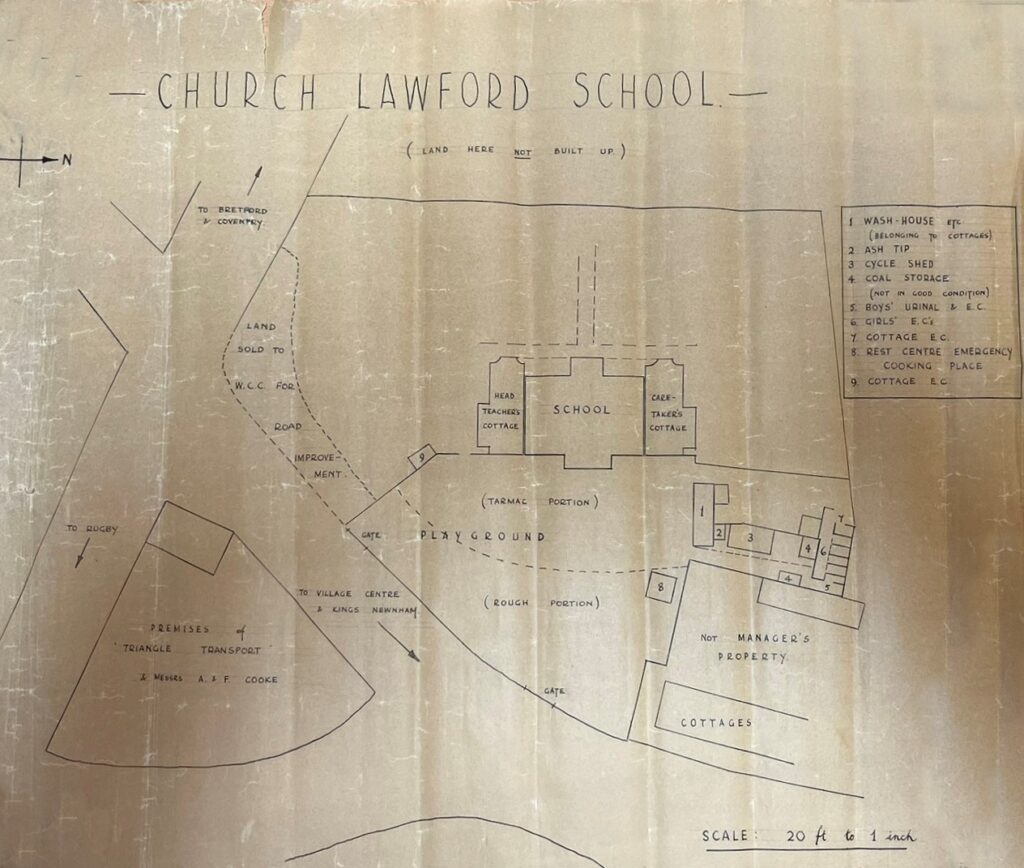The original Village School was built in the 1840s, opening by 1849. From the middle of that decade (around 1845) separate educational provisions had been made using monies from the Crofts Charity which became available in 1845 (detailed here). The records of the charity show it supported a small number of children being educated at that point, although others may had been in paid education with local governesses by that point. The school was built at the top of what became known as School Street, initially known as the Duke of Buccleuch’s School (Mixed). It was founded by Lord John Douglas Scott, a popular Duke whose statue can be found in the centre of Dunchurch.
This page looks at the history of the first village school, and a separate page records the available school group photographs from that era – see here.
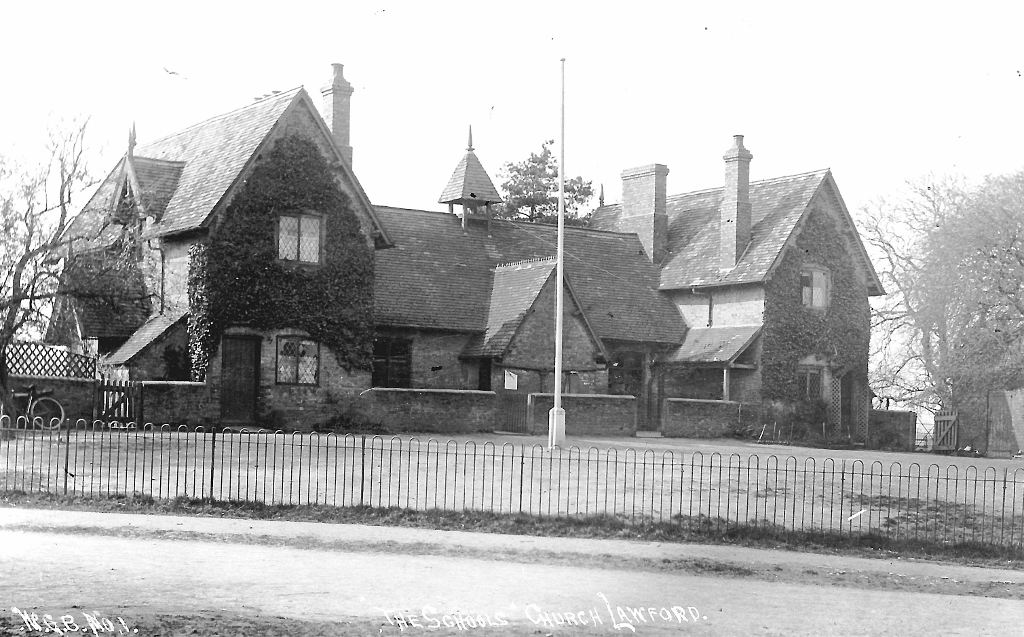
Back in the 19th Century when the school was built it was set up as two Day Schools – a Boys School and a Girls School, and also with a Night School for adults in the village. Towards the end of that century the spread of ages combined with the numbers attending meant a mixed school of three classes became more practical. Those in charge of the schools from the opening in the mid 19th century to its closure in 1964 were as follows.
| Master / Mistress | From | To | Role |
| Leonard Twining | 1849 | Dec-1886 | Master of Boys School then Overall control |
| Mary Anne Pettigrew | 1849 | 1868 | Mistress of Girls School |
| Elizabeth Pettigrew | 1868 | 1870 | Mistress of Girls School |
| Camilla Smith | 1871 | Oct-1900 | Mistress of Girls School (see note below) |
| Mark Lansdowne | Jan-1887 | Sep-1893 | Master of Combined School |
| Marion Lea | Feb-1894 | Oct-1898 | Head Mistress |
| Eleanor Yates | Oct-1898 | Jun-1899 | Head Mistress |
| Eleanor Adams | Jul-1899 | Jul-1904 | Head Mistress |
| Miss E Mathison | Aug-1904 | Mar-1907 | Head Mistress |
| Annie Price | May-07 | May-20 | Head Mistress |
| Margaret Horton | Jul-20 | Sep-21 | Head Mistress |
| Florence Craven | Nov-21 | Aug-38 | Head Mistress |
| Janet Meikle | Sep-38 | Apr-41 | Head Mistress |
| Martha A Stocking | May-41 | Jul-50 | Head Mistress |
| Barbara M Forty | Aug-50 | Dec-54 | Head Mistress |
| Winifred Baker | Aug-1954 | Apr-1966 | Head Mistress (including new school from 1964-1966) |
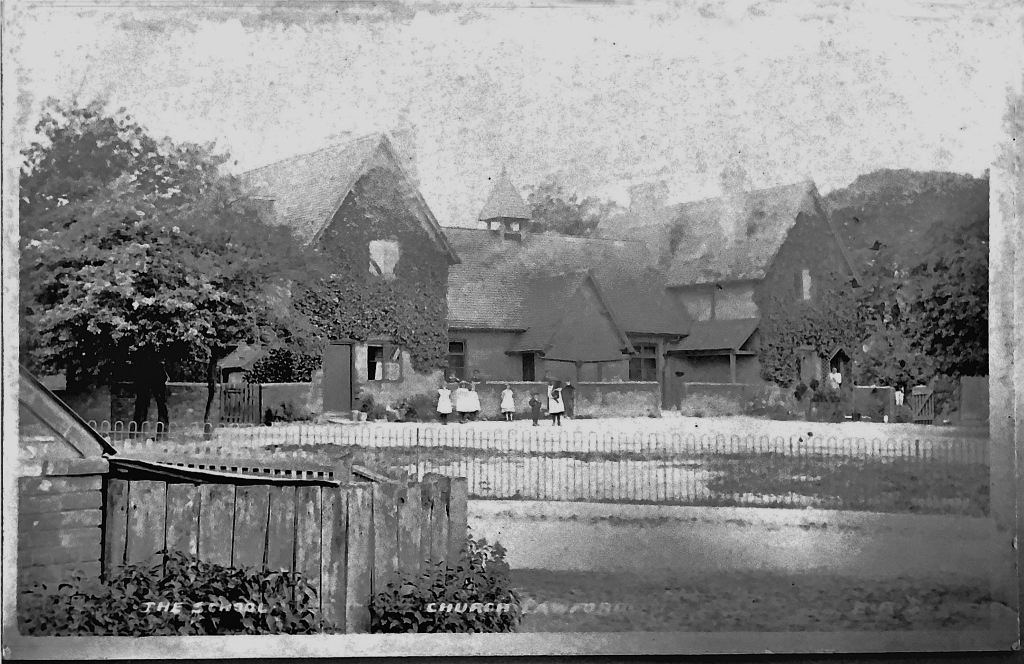
A 19th Century School
The original Village School opened in 1849. It was built at the top of what became known as School Street, initially known as the Duke of Buccleuch’s School (Mixed). It was founded by Lord John Douglas Scott, and included accommodation for a Head Teacher. When Lord Scott died in 1860 it was then supported by successive Duke’s into the twentieth century, with room for 90 children, although in 1900 there were 38 in attendance. Early in the 20th Century, at around the time the majority of properties in the two villages were sold the Church involvement increased and the school became a Church of England school.
As can be seen from the table above showing Head Master and Mistresses over the years, Camilla Smith was instrumental in village education for around 40 years. In the latter part of the 19th century she was the Mistress in charge of the Girls school at the time when the Boys and Girls schools were seen as distinct entities. She then continued to look after the Girls school when the schools became one. and had special responsibilities for the infants classes in later times. After 30 years in those roles she retired, early in the twentieth century, but she was able to keep her home in the village thanks to the kindness of the Duke of Buccleuch, and then took up a Governess role in the village for a further ten years or so..
Details of her leaving presentation were in the Rugby Advertiser in October 1900.

Another recognisable name on the list above will be that of Janet Meikle – known to many as Janet Wotherspoon from Rookery Hall Farm. Janet took over as Head Teacher shortly before the outbreak of the Second World War, so had all the additional challenges of dealing with war precautions, evacuees and use of school resources for other purposes. After she left teaching to be married to a local farmer she had many years of close involvement with the school and with village life in general.
School Life in the Twentieth Century
Early in the 20th Century, at around the time the majority of properties in the two villages were sold the Church involvement increased and the school became a Church of England school. Although the school appeared to be a reasonable size from the outside, a large amount of space was taken for the houses at either end. These houses were funded by the Diocese, as distinct from the ongoing funding for the school buildings and staff which were the responsibility of the County Education Baord.
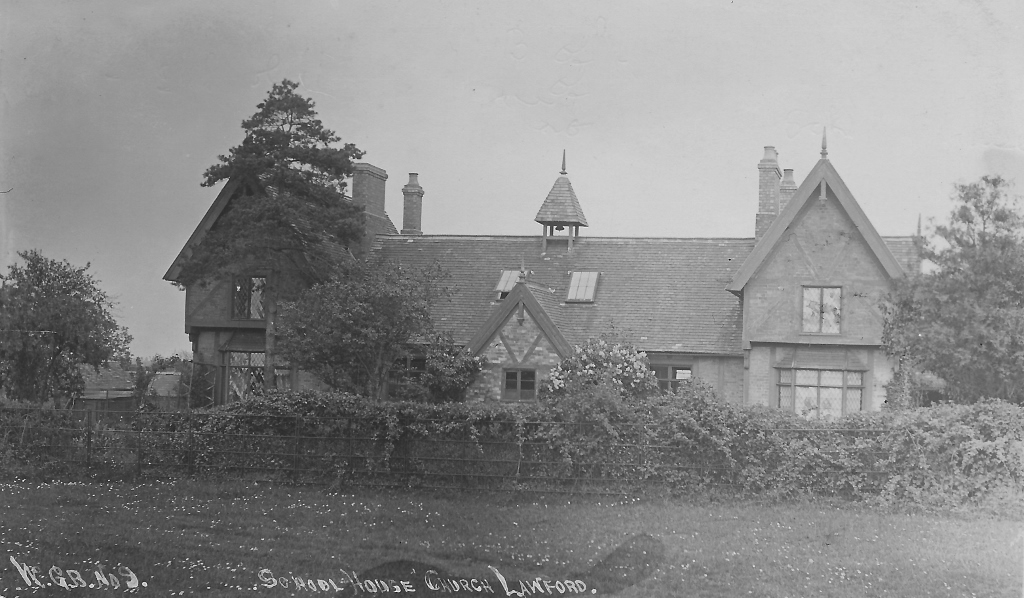
The Village School provided the complete education available to rural communities in the pre-war days, with children typically staying at school until the age of 14. The scholars from Kings Newnham would walk the mile or so each way to the school. The 1944 Education Act introduced secondary education for all, raised the school leaving age to 15, and provided school meals and milk for all children. This meant that the age range in the school was reduced to between 5 and 11 years, with the introduction of 11-plus exam, to replace the “Special Place Exam” which had been used to assess grammar school candidates. Those over 11 years old were now provided with compulsory secondary education in either Rugby or Wolston (from 1956). The full 11-plus for all in their final year was not fully implemented in the Rugby area until 1961.
Initially there was just a single schoolroom, so the various challenges of educating children with a wide age-range had to be addressed. The use of a screen to create two classrooms, as well as the playground at the front would help. Following changes over the years, by the 1950s there were three classrooms – the two at the back which were divided by the sliding screen and one at the front overlooking the playground. In 1960 there were 3 teachers – Miss Baker, Miss Blount (the vicar’s daughter) and Mrs Wilkinson, one in each classroom. At the bottom of this page is a plan of the school and a location map.
Although the school appeared to be a reasonable size from the outside, a large amount of space was taken for the houses at either end. By the later days of the school the headmistress (Miss Baker)had the house to the left, and the caretaker (Mr Hence) the house attached on the right. Both houses had their gardens to the back. The toilets were separate – off to the right, either side of the caretakers shed – a later upgrade converted them to flushing toilets.
School Dinners were served in the Reading Room, having been brought in from Rugby, so the children were escorted down the street each day – only being allowed back when everything was eaten!
The school bell was rung at the start and end of day – using a bell rope which the children in the top class helped to ring – the bell tower can be seen in the picture below. The bell from the school was kept, displayed in the new school, before being stored in the church.
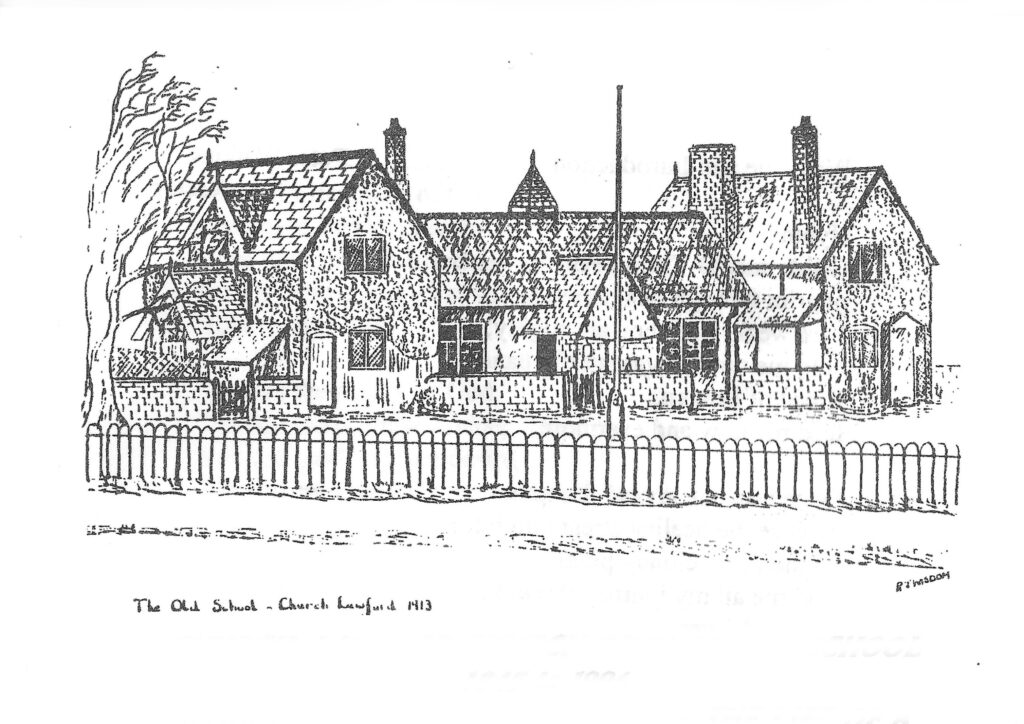
Updates and Improvements During 1930s
During the 1930s there were various improvements made to the school, with the overall appearance changed by the installation of the front windows to give much improved natural light as well as additional space, with a separate storage shed and toilet facilities. The picture below can be seen in contrast to the pictures at the top of this page. The school water pump can be seen in the centre of the building, and the flagpole / maypole is to the front. The storage shed to the right was well used as a target surface for ball games. Note also that the four cottages between the school and the Village Farm remained until the late 1950s – by the last few years of this school those cottages had been replaced by the two houses at numbers 5 and 7 School Street.
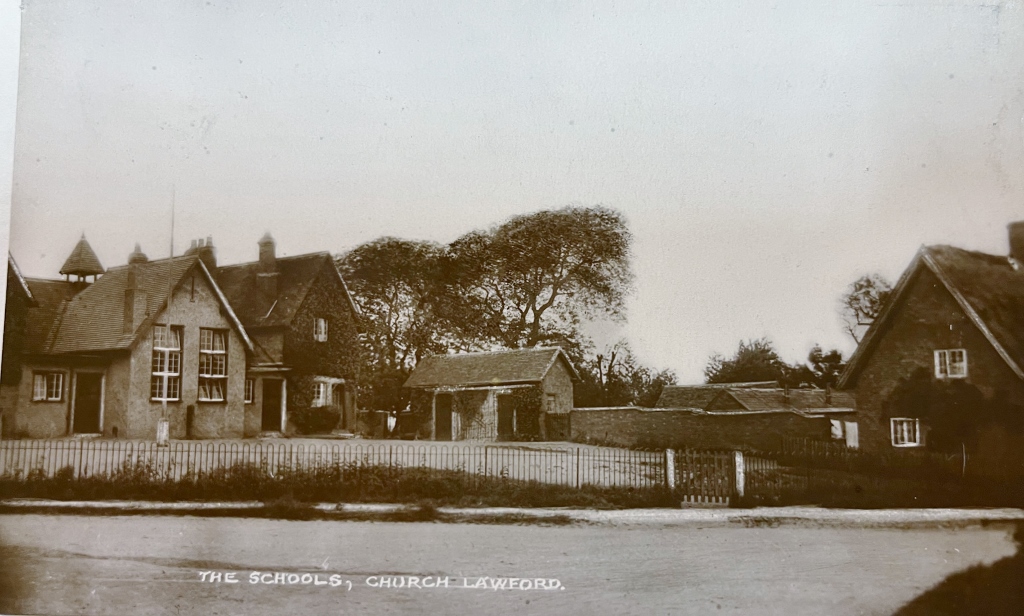
Further School History
Prior to Janet Meikle the school was controlled by Florence Craven. Miss Craven was at the school for 17 years from 1921 to 1938 and took an active part in village life, as can be seen in the attached clipping from the Rugby Advertiser of August 1938.
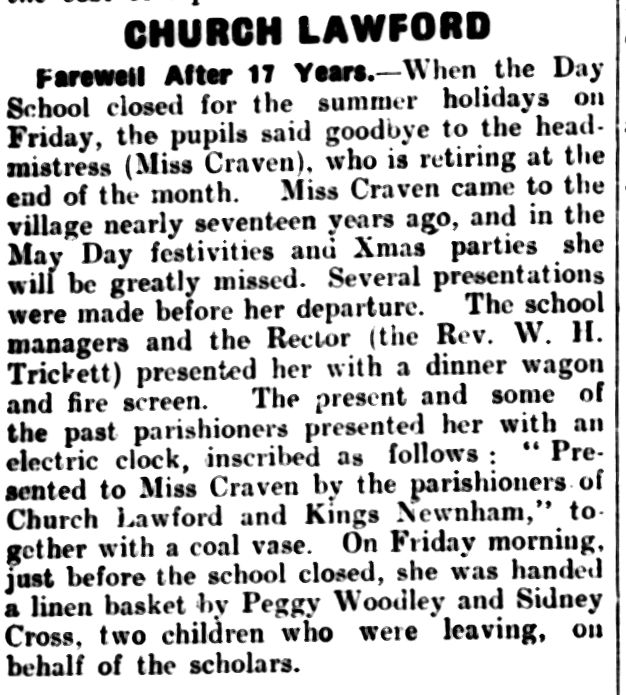
During the Second World War the school and it’s staff played a significant part in accommodating evacuees and refugees, firstly from Willesden as part of the London Evacuation in 1939, and then from Coventry following the 1940 raids on the city – more details can be found here.
After the war Mrs Stocking continued to run the school until her retirement in 1950. Miss Forty then took control for the next four years. By early 1954 the three classes were as follows
- Class I – Ages 9 to 14 – 23 Children with class teacher Miss Forty
- Class 2 – Ages 6 to 8+ – 14 Children with class teacher Miss Brooks
- Class 3 – Ages 5 to 6+ – 19 Children with class teacher Miss Blount
Miss Forty left the area at the end of 1954, with Miss Baker taking charge as the last Head Teacher of the original Village School.
The school closed in 1964, to be replaced by a new school further down School Street – detailed here. Subsequent demolition of the old school in the early 1970s gave birth to ‘The School Houses Charity’. This charity, established in 1980, disburses the income from a portion of the proceeds from the sale of land on which the old school once stood. Under the terms of the charity, those residing in our two parishes may apply for modest grants to further religious or general education.
The school was regularly reviewed – as seen in this report from May 1897..
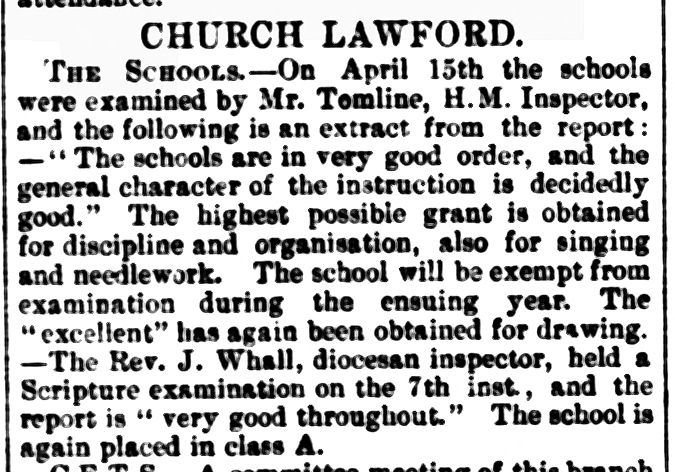
After the school closed in 1964 there was much debate about the fate of the site, Four years later the debate continued, and was featured in the Coventry Evening Telegraph.
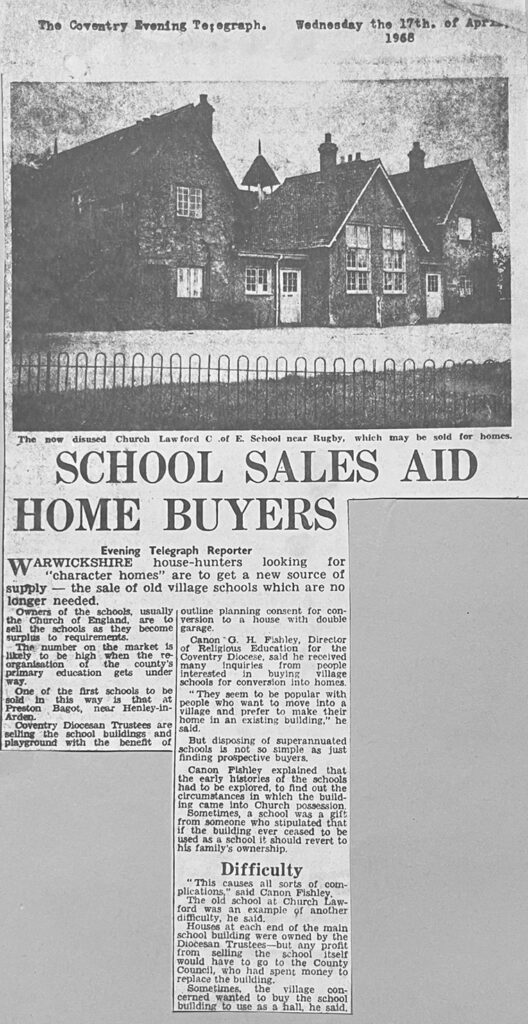
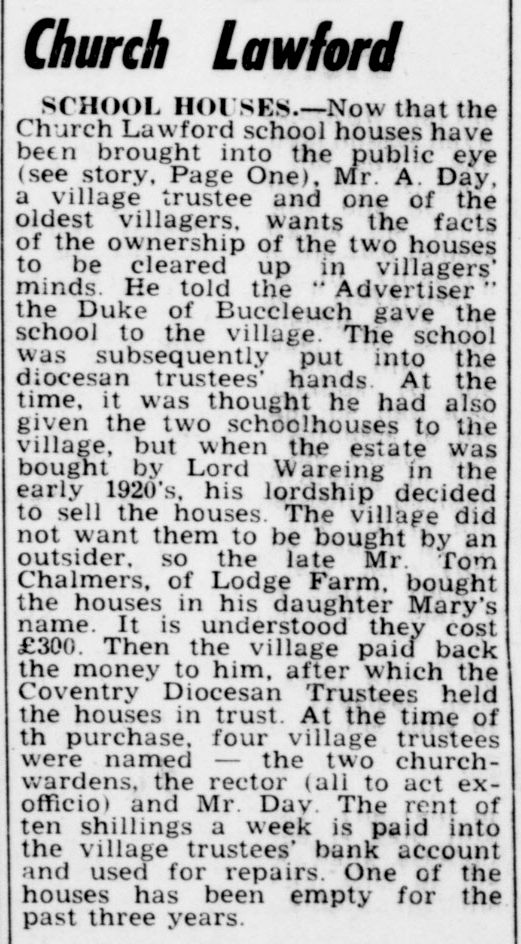
School Plan
A plan of the school is shown below.
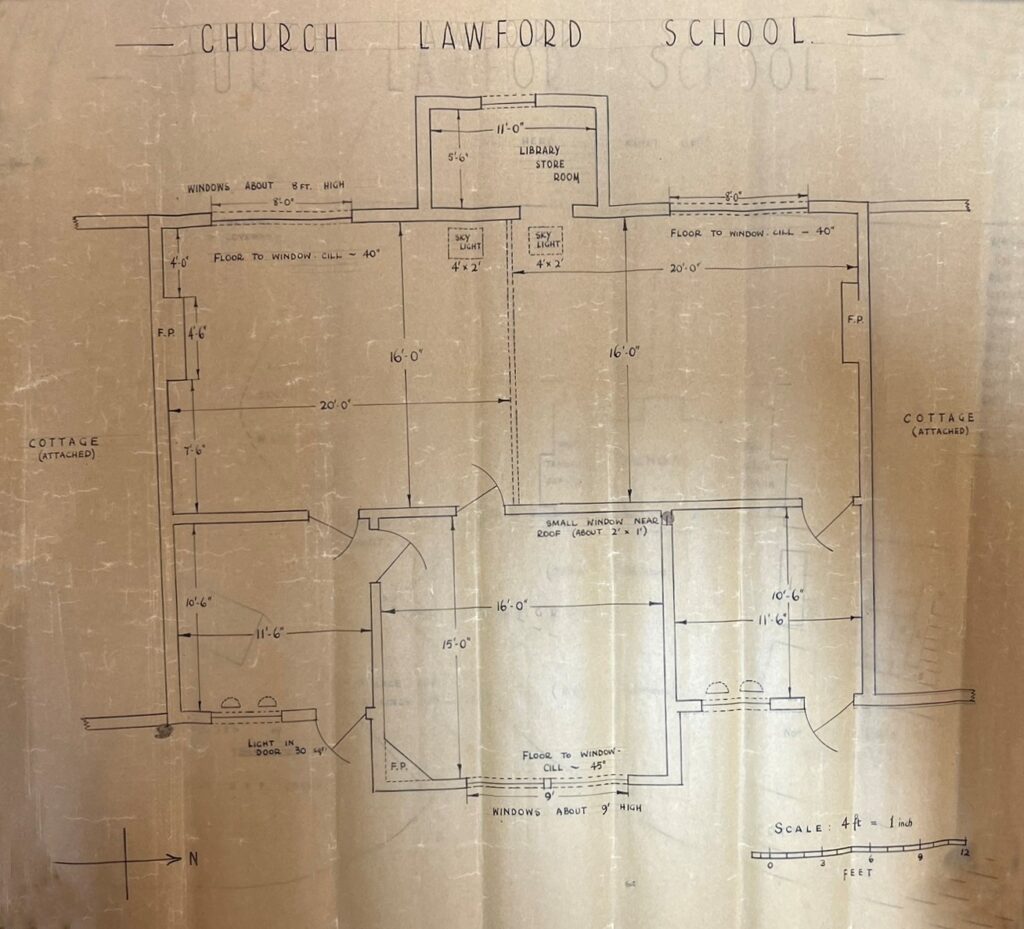
Although the school appeared to be a reasonable size from the outside, a large amount of space was taken for the houses at either end. By the later days of the school the headmistress (Miss Baker)had the house to the left, and the caretaker (Mr Hence) the house attached on the right. Both houses had their gardens to the back. The toilets were separate – off to the right, either side of the caretakers shed – a later upgrade converted them to flushing toilets.
The location of the school is detailed on the map below
